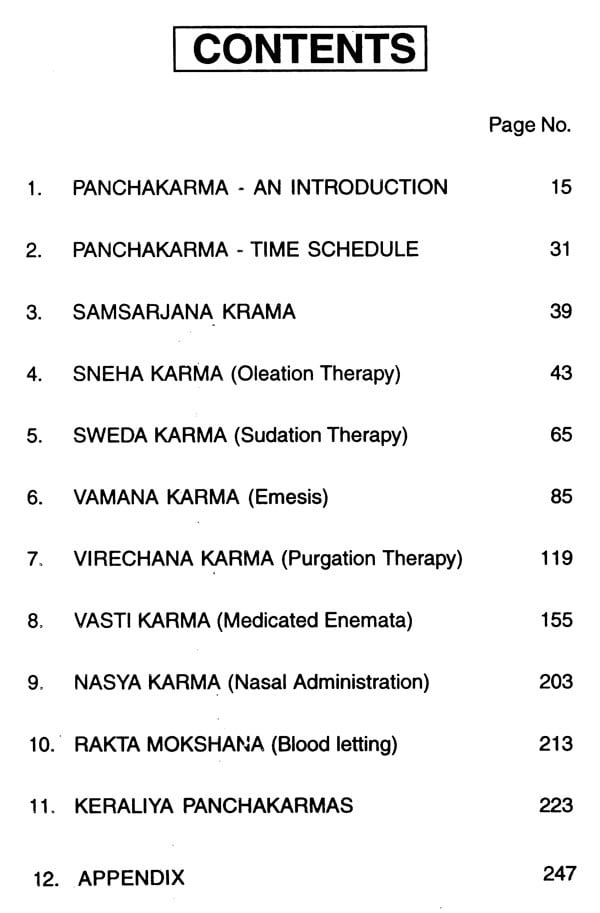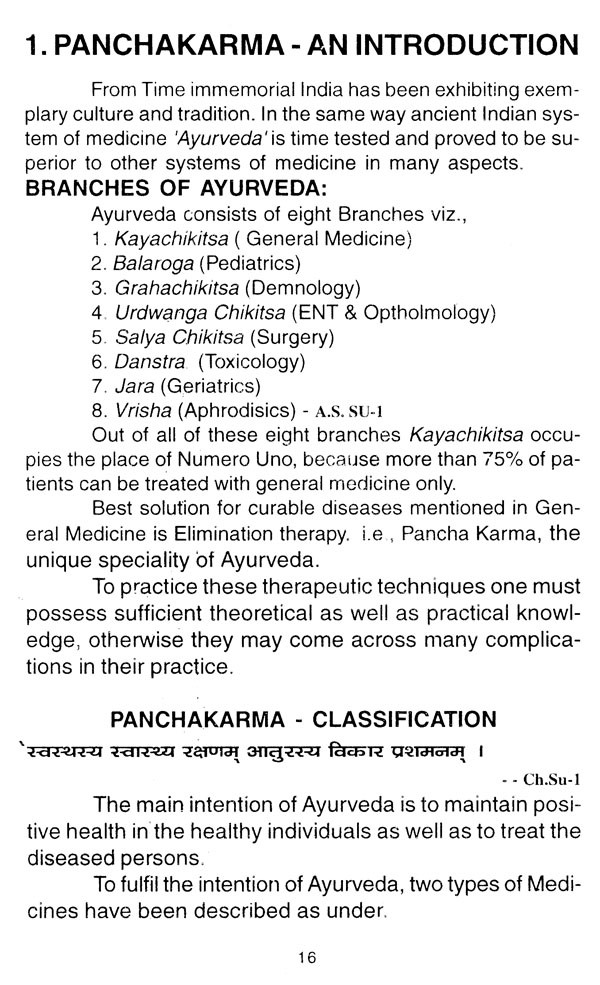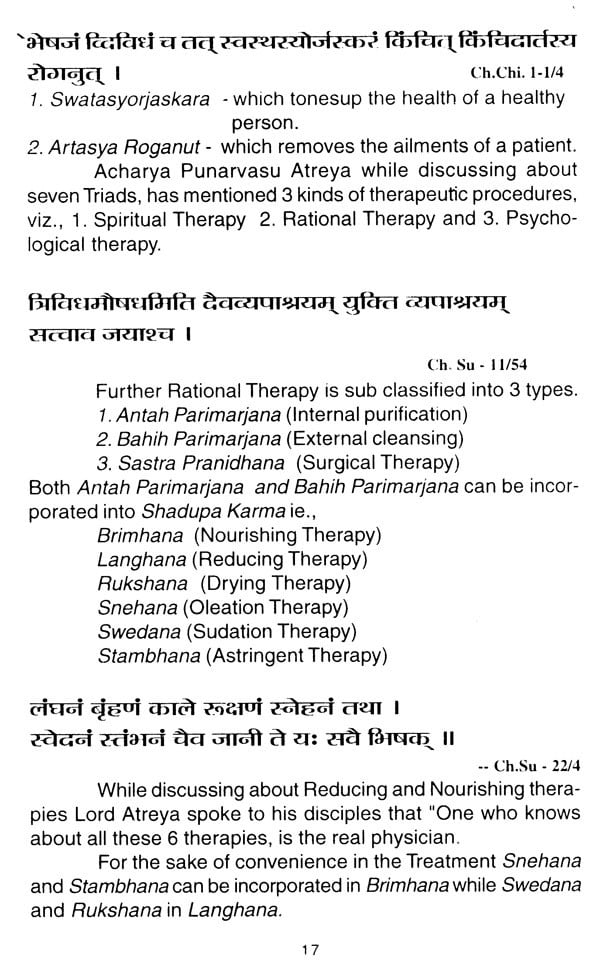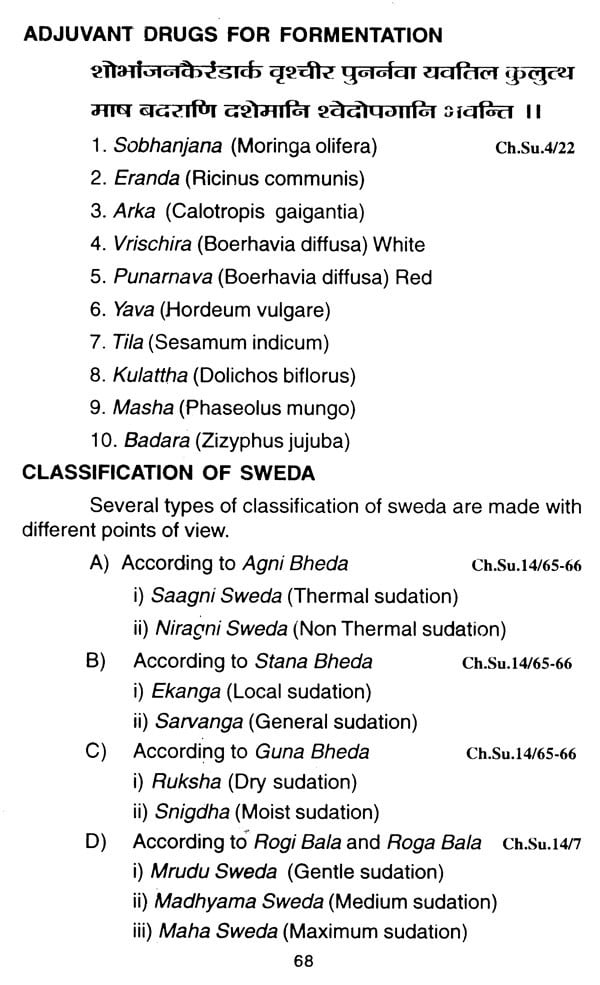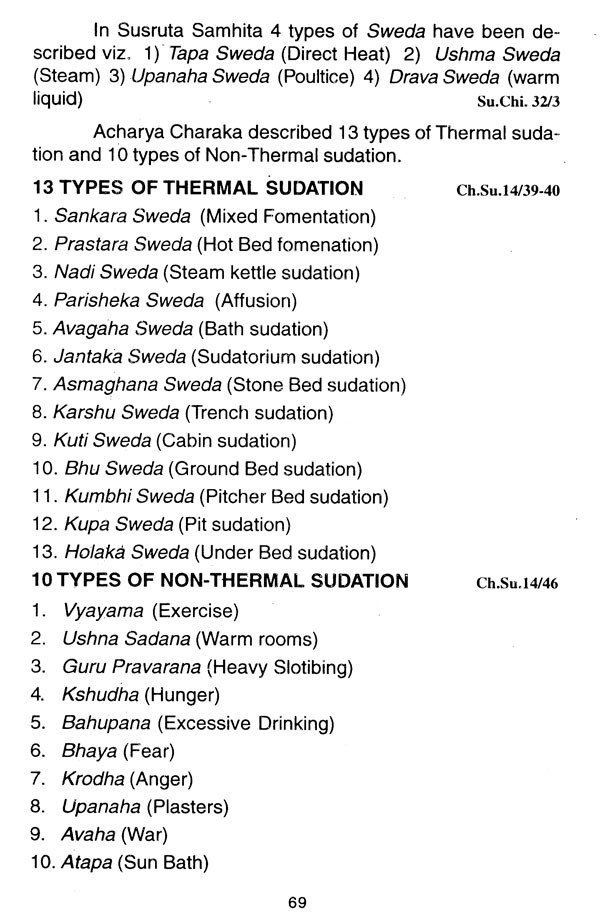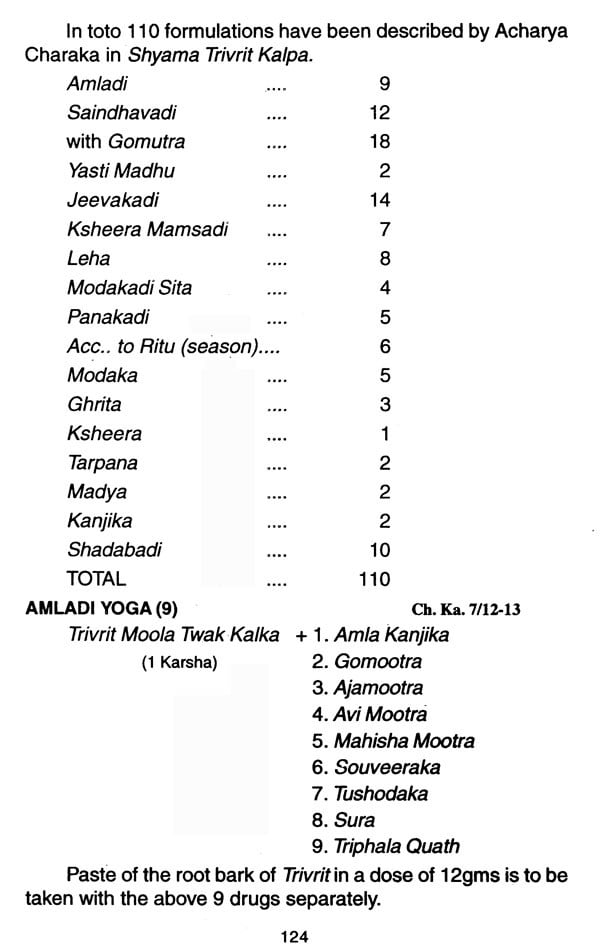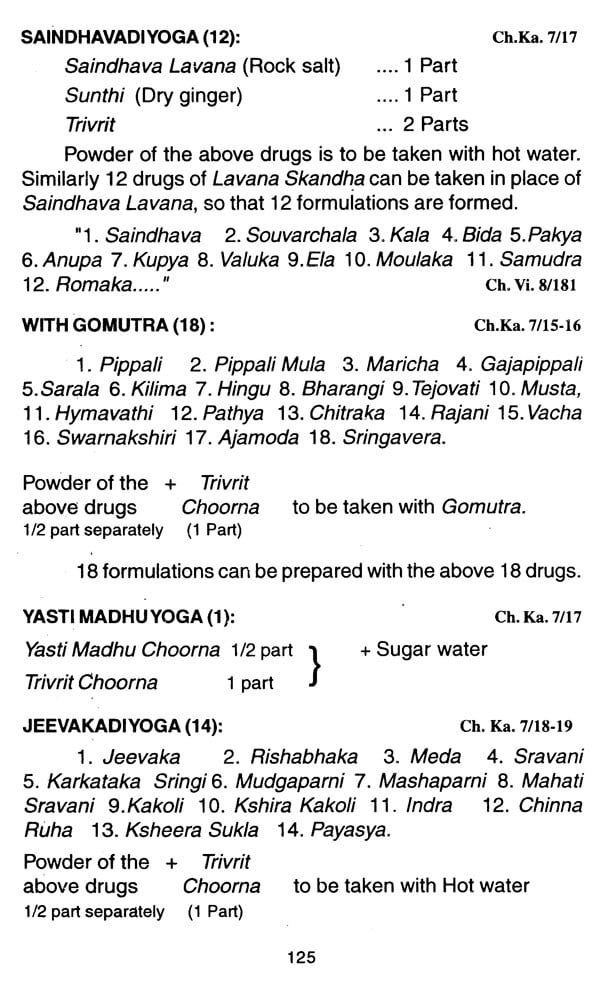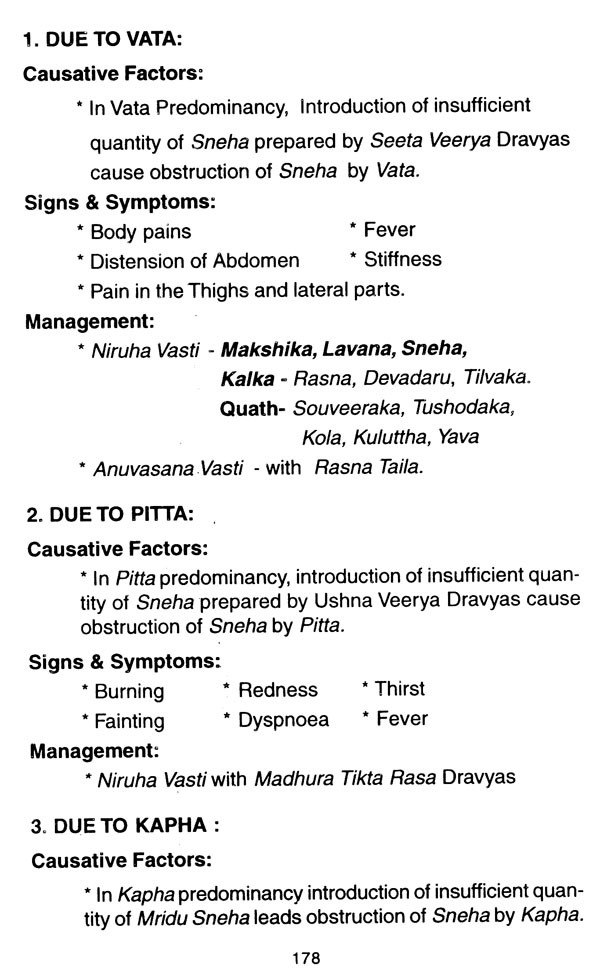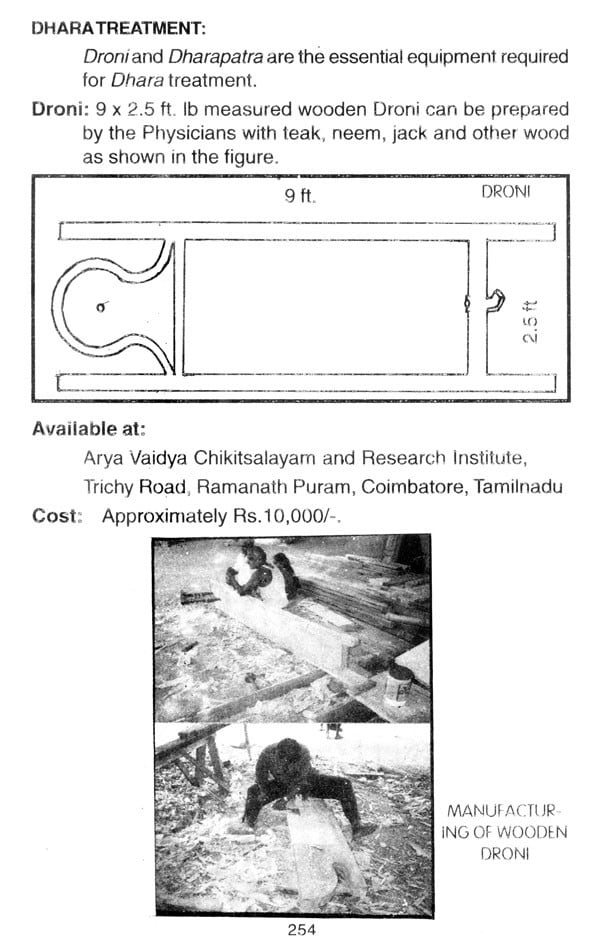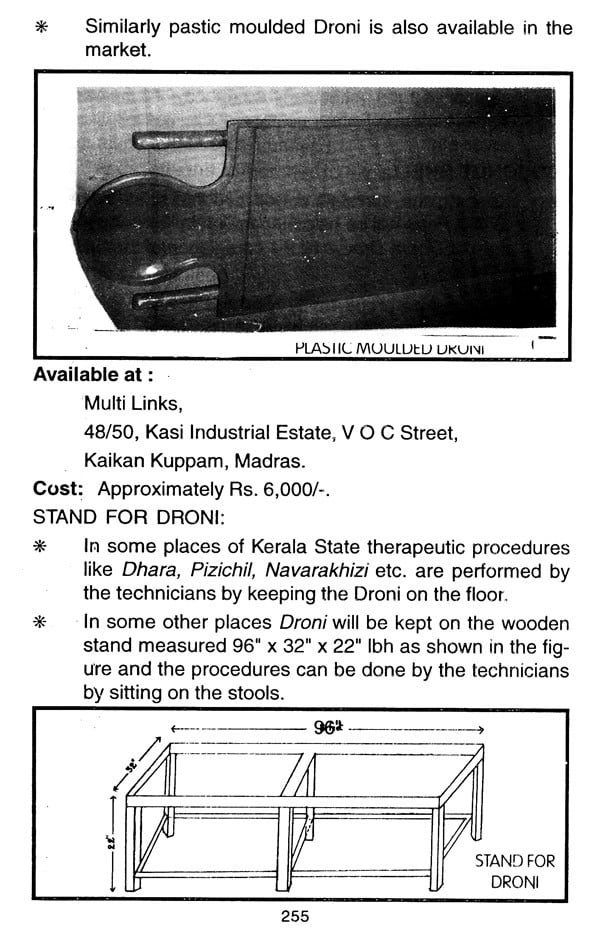
Panchakarma- A Hand Book for Students & Practitioners
Book Specification
| Item Code: | UBE015 |
| Author: | R. Vidyanath |
| Publisher: | Chaukhamba Sanskrit Pratishthan |
| Language: | English |
| Edition: | 2017 |
| ISBN: | 9788170847458 |
| Pages: | 264 (Thrughout B/w Illustrations) |
| Cover: | HARDCOVER |
| Other Details | 9.00 X 6.00 inch |
| Weight | 450 gm |
Book Description
To live as a human being is thus a pursuit of specific purpose which calls for the maintenance of sound physical and mental health. A healthy body and mind are the essential prerequisites to be able to perform the demanding task. This point is well reflected in the Aarsha- Vaakya:
"Dharmartha Kama Mokshanam Aarogyam Mulamultamam".
Maintenance of health is by itself an in-built mechanism of the systems that work within a living body keeping in terms with the internal environment (homoeostasis) and the external environment (eco- logical balance). Nature also imposes a duty on the composite and holistic unit (the individual) to Endeavour to maintain the regulating mechanisms with utmost care to ensure preservation and promotion of health. Any lapse by the individual may give rise to a sustained disturbance in the equilibrium -- internal and external -- which may be reversible or and may result in manifestation of disease ensured by death.
Ayurveda recognizes the presence of three basic constituents which govern and represent the varied and vital mechanisms at the micro and macro levels in the body. These are Doshas, Dhatus and Malas. During the incessent activities of the living systems through- out the span of life several by-products are continually formed some of which are recycled and those which are in excess or which are rendered irreversible must be excreted in the process. Nature provides an in-built mechanism for such disposal but there also it imposes compulsion on the individual to assist and take care of the natural processes to ensure maintenance of the equilibrium.
The reasons may be Due to lack of sufficient practical knowledge regarding these techniques.
Non availability of the equipment freely in the market. Phobia of establishing Panchakarma units in respect of expenditure.
The present text book 'Panchakarma' is written with the sole aim of presenting a complete book on the subject keeping in mind the requirements of Ayurvedic undergraduate students as well as the practitioners. The book includes all the topics prescribed in the syllabus recommended by Central Council of Indian Medicine.
The book has been divided into 12 chapters. In the first chapter 'Introduction to Panchakarma' has been discussed. Time required to perform all the Sadhana therapies in a systematic manner has been incorporated in the 2nd chapter, whereas the 3rd chapter dealt with Samsarjana Krama.
In the 4th and 5th chapters preoperative procedures like oblation and sudation have been discussed. In the 6th and 7th chapters various formulations of emetics and purgatives have been explained in a simplified manner.
Similarly in the 8th chapter, many formulations pertaining to Astapana Vasti and Anuvasana Vasti have been encolpion the tabular form for an easy understanding. The 9th and the 10th chapters dealt with Nasya and Rakta Mokshana respectively.
**Contents and Sample Pages**
